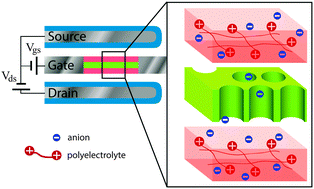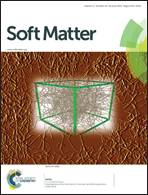‘Soft’ amplifier circuits based on field-effect ionic transistors
Abstract
Soft materials can be used as the building blocks for electronic devices with extraordinary properties. We introduce a theoretical model for a field-effect transistor in which ions are the gated species instead of electrons. Our model incorporates readily-available soft materials, such as conductive porous membranes and polymer-electrolytes to represent a device that regulates ion currents and can be integrated as a component in larger circuits. By means of Nernst–Planck numerical simulations as well as an analytical description of the steady-state current we find that the responses of the system to various input voltages can be categorized into ohmic, sub-threshold, and active modes. This is fully analogous to what is known for the electronic field-effect transistor (FET). Pivotal FET properties such as the threshold voltage and the transconductance crucially depend on the half-cell redox potentials of the source and drain electrodes as well as on the polyelectrolyte charge density and the gate material work function. We confirm the analogy with the electronic FETs through numerical simulations of elementary amplifier circuits in which we successfully substitute the electronic transistor by an ionic transistor.


 Please wait while we load your content...
Please wait while we load your content...